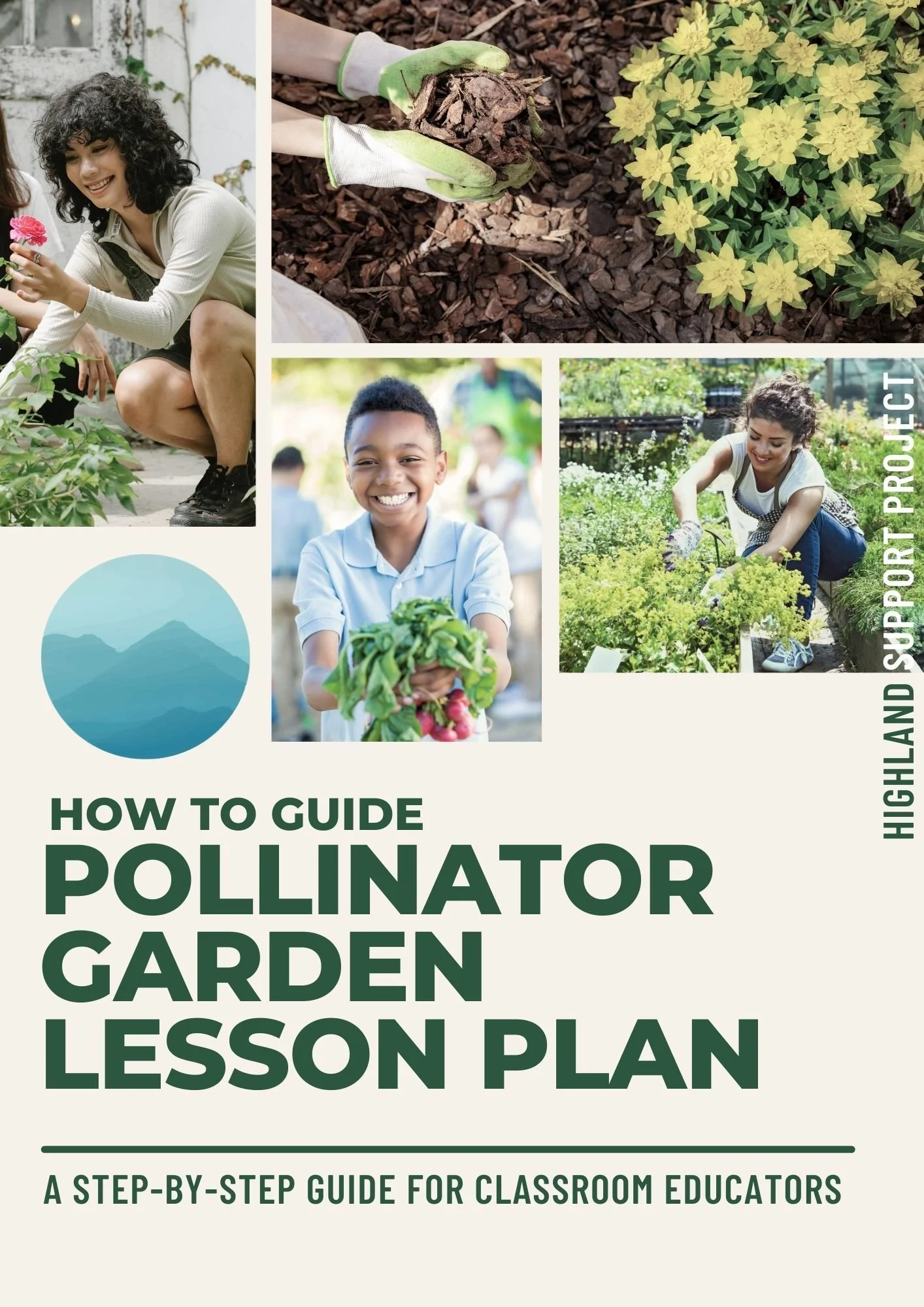An Introduction to the Pollinator Garden Curriculum Packet
Written By Kenneth Hang
Over the months, HSP has been working hard to compile a pollinator garden lesson plan to encourage teachers to showcase the wonders of the outdoors to students within and outside the classroom. Our environment plays a huge role in our lives, and these lessons teach us its importance with the opportunity to get hands-on with it. Lessons range from Kindergarten to 12th grade, so here’s a quick summary of lessons you can expect from this guide and some highlight lesson plans and insight from those who worked on this project.
From One of Our Student Writers:
Creating the “Soil Examinations” and “Garden Bed Construction” was an incredibly enriching experience as I examined simple concepts like growing fruits and veggies and becoming versed in local horticulture from an instructor’s perspective. It is crucial to get school-aged children involved in agriculture to promote food security and environmental advocacy, and to play a key role in driving that learning has been extremely rewarding and special.
-Jozlyn Basso
Aromatherapy in the Garden
Have you ever thought about how therapeutic natural scents can be just from a whiff of it? In one of our lesson plans for all ages (grade K-12), you can take students on a journey through aromatherapy as they get whiffs of different plants like basil, citrus leaves, peppermint, and more! Each aromatic plant is associated with different feelings that will help your students relax and unwind, maybe even helping them in the future.
Learning More About Plants
It’s good to know what you’re planting and caring for when tending to a garden. Throughout our guide, we have various plans that will teach students how to care for these plants in pollinator gardens, while also going more in-depth on the intricacies of these plants for those in higher grade levels! A standout plan that is great for high schoolers (grade 9-12) on tomatoes, temperature, and xylem, answering the big question, How exactly does temperature affect the xylem in tomato plants?
Our Pollinator Friends
While we as humans can create these spaces for nature to thrive, nothing can move grow and expand without our pollinator friends and creatures that play a vital role in allowing these gardens to thrive. From exploring the tiny and vast world of worms (Grade K-5), to the hardworking pollinators like bees and butterflies who help pollinate our plants (Grade 6-8), teachers have plenty of content to go through that they can teach their students. On days that it isn’t possible to go outdoors, we have lesson plans that can be done in the comfort of the classroom, such as our pollinator heroes plan (Grade k-5) that gives students to craft and play in an interactive game that will teach them more on the similar yet varied nature of bees and butterflies.
From the Writer of Pollinator Heroes Lesson Plan:
“Since bees and butterflies both pollinate in different ways, I wanted to make an interactive activity for students to play that would help get them in the mindset of a butterfly or bee to get a feel for how they’re both vital to the natural world while collecting and distributing pollen in their own unique ways.”
-Kenneth Hang
Building for Pollinators
For the days that you want to really let your students go hands-on with nature, we have a plethora of lessons that students can enjoy as they create their own water stations for bees (Grade K-5) or even construct a garden bed for the school/local community (9-12). Want to grow everyone’s love for our favorite pollinator: the bee? Get your students out there to make the bees their very own bee hotel (Grade 2-6)! All they’ll need is some art supplies, a cleaned-out can or bottle, and some creative elbow grease to make the snazziest bee hotel on the block.
From the Writer of Build Your Own Bee Hotel Lesson Plan:
Making my lesson plan, the bee hotel was a lot of fun because it required me to think of readily available items. The majority of my lesson plans originate from the concepts of other teachers' plans, which I then modify to meet the needs of the grade level i’m working on or the resources available in a common classroom.
-Valerie Paredesma
Hopefully, this newsletter gives you an idea of all the potential lessons you can teach to your students or even do with your friends! The benefits of the natural world are endless, so let’s do our best to take care of it one step at a time.




